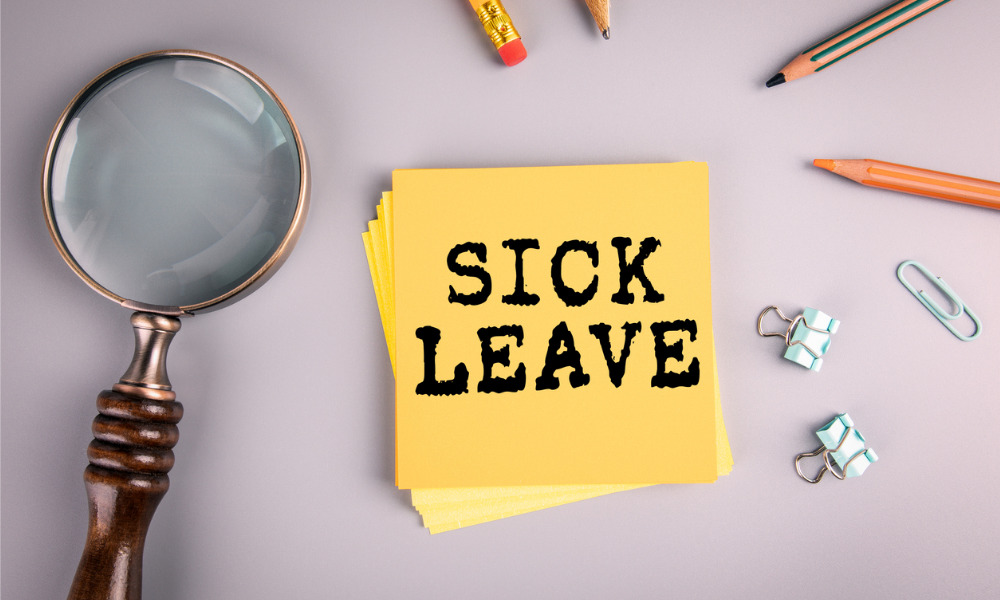
It might be good news for employees, but the cost to employers could be huge

The Victorian Government’s decision to fund sick leave for casual workers over the next two years is causing extreme angst amongst businesses in the state. The Victorian Government’s ‘Sick Pay Guarantee’ will be trialled over the next two years and will cost local taxpayers $245.6 million before the financial burden will be placed on employers through a levy.
The ‘Sick Pay Guarantee’ scheme will provide five days, or 38 hours, or paid sick or carers leave for workers at the national minimum wage.
“The sick pay guarantee scheme is open to workers in hospitality, retail, aged and disability care, cleaning and laundry services, security and the supermarket and supply chain industries, and accordingly will cover employees of a lot of small businesses,” Katie Sweatman, Kingston Reid, partner, said. “Many of these small businesses will be dependent upon casual employees to be able to respond to peaks and troughs in workload, and the objective of the scheme is to provide income security to these employees when they are not fit to attend work.”
Sweatman points out that casual employees already had the benefit of the general protections provisions of the Fair Work Act 2009 and could not be subject to adverse action, such as dismissal or reducing shifts, because they suffered an illness or injury, or because they needed to care for a member of their household or immediate family.
“The introduction of the sick pay guarantee doesn’t create new rights or obligations in this regard but does mean that casual employees may view their right to be absent from work due to illness more strongly,” she added. “For a claim of less than 15 hours, there is no requirement for a worker to provide evidence in support of their claim for sick pay. This is intended to overcome barriers identified through the consultation process to workers being able to access medical practitioners to obtain medical certification in support of their illness or injury.
“It is foreseeable, however, that there may arise a perception amongst casual employees that they are not accountable to their employer when they fail to attend work for single day absences. There is accordingly a communications piece for human resources teams to make expectations around absences really clear.”
It is an approximate 150,000 workers will be eligible for the scheme. Workers under the age of 18 will be eligible for the scheme but must have the permission of a parent or guardian to apply. It will be on top of the 25% casual loading most of these workers would currently receive.
Self-employed sole traders and freelancers are also eligible to apply. The Andrews government also spent $5 million on a consultation process to design the new scheme. The Australian Industry Group is campaigning against the scheme.
"The Government has costed Stage 1 at $245.6 million for a two year period,” Tim Piper, Victorian Head of the peak employer association Ai Group, said. “Presumably Phase 2 will involve an even wider set of eligible occupations and a much larger cost. These huge costs will no doubt require a very substantial levy on Victorian businesses if the government decides to pass on the costs to businesses at the end of the two year trial, as it appears to be planning to do.
"The scheme is deeply flawed and should be abandoned. The last thing that Victorian businesses need is the prospect of a hefty payroll levy in two years' time to fund this illogical scheme. The looming levy will kill investment in Victoria and put a hand-break on the recovery.”
Recent Australian Bureau of Statistics data shows about 23 per cent of all employees across the country are on casual contracts.
“Although it is proposed that the scheme will be administered by Victorian Government to minimise administrative burden upon employers, it is difficult to conceive how the government will verify eligibility without engaging with the employer of an employee or contract worker seeking to access sick pay,” Sweatman added. “While fully funded by the Victorian Government for the initial pilot, employers who will expected to contribute levies to fund the scheme moving forward will be right to want to ensure that the system is administered appropriately, and payments are made in accordance with the intention of the scheme.
“The sick pay guarantee is, in effect, another form of portable leave designed to provide financial security to workers engaging in insecure work across different employers. Across Australia, there is a myriad of schemes which, as they continue to expand and evolve, will become more and more difficult to harmonise. This makes it challenging for workers to know where to go to access paid leave benefits, particularly considering the high proportion of non-English speaking or low educated workers in the industries involved in the scheme.
“With each scheme having its own administrative body, there is a huge amount of duplication and cost eating away at levies paid by employers that should instead be directed to the benefit of workers.”
The scheme went live on Monday, March 14.